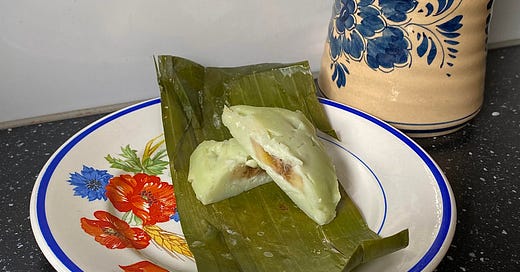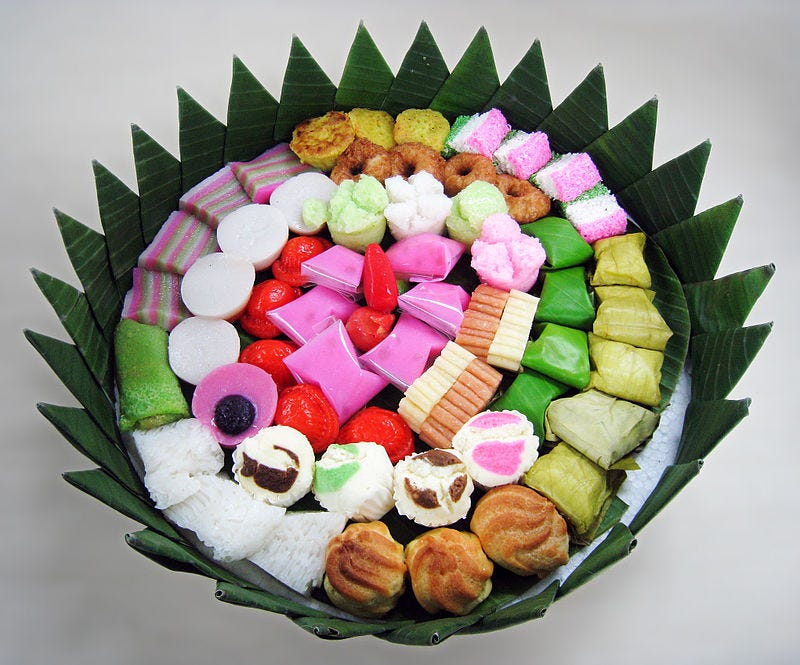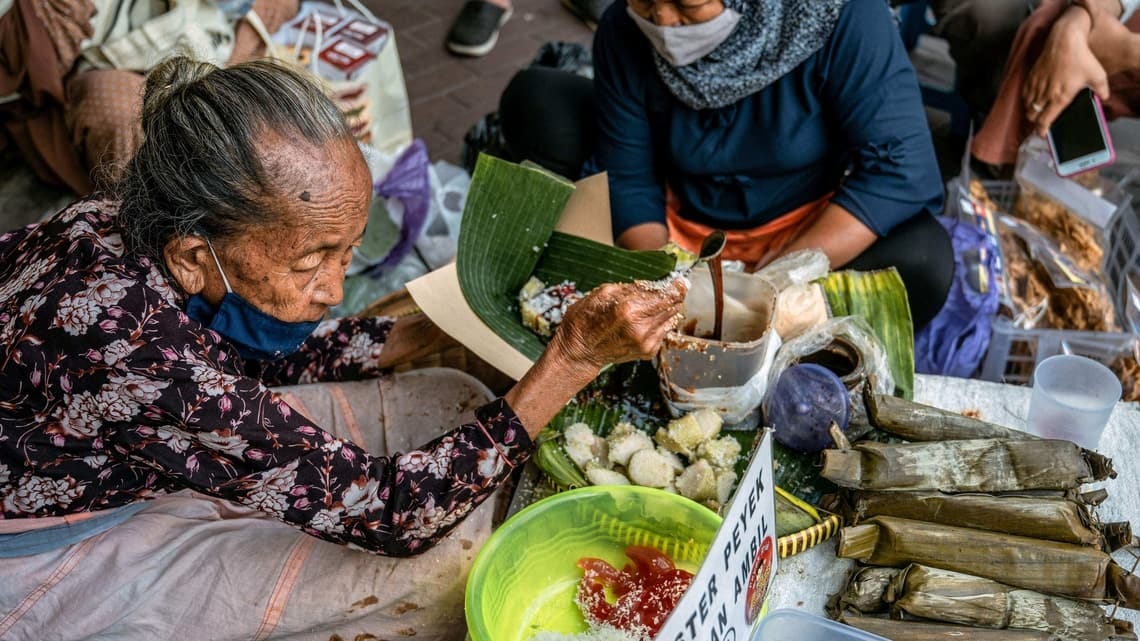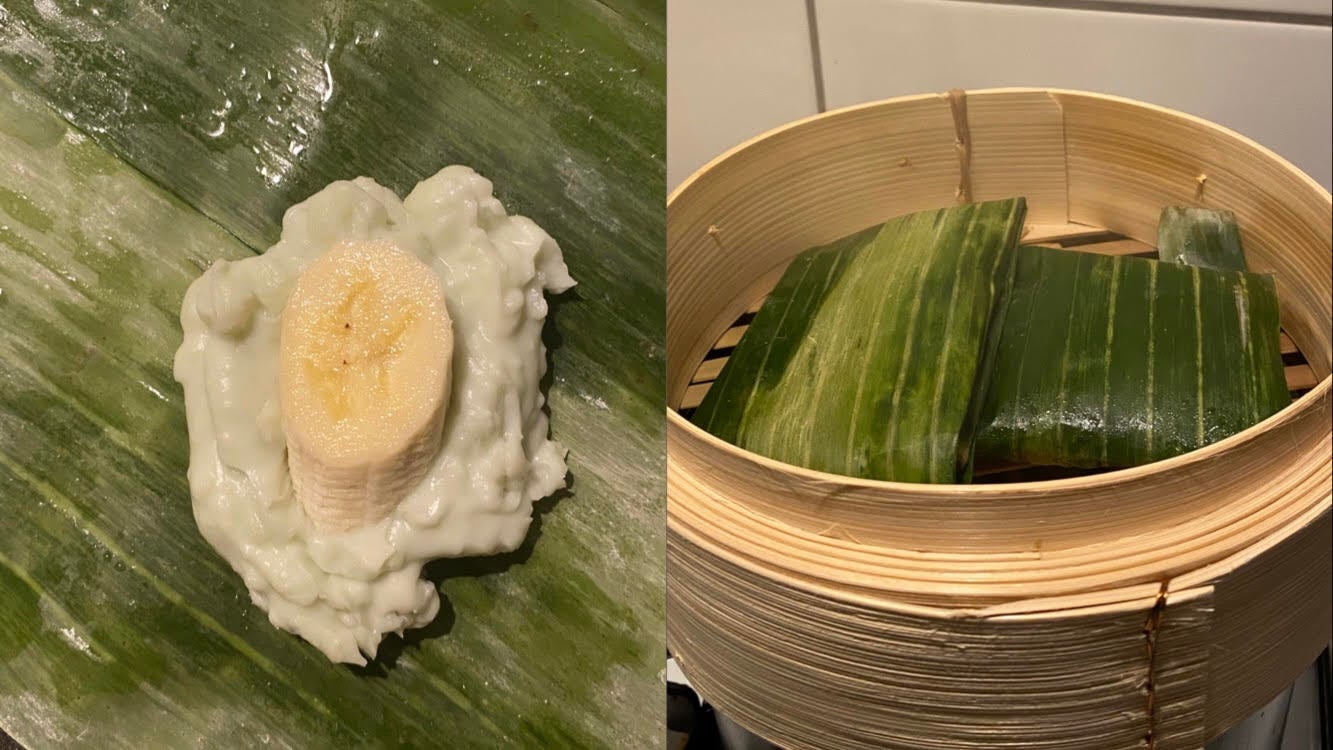About Jajan Pasar
We don't have charcuterie but we have Jajan Pasar (and I think that's better).
I grew up with a very disciplined mom when it comes to food and nutrition (which I now thank her for it). We barely had sweets or snacks on the table. She had a 9-5 job and me and my sister had busy schedules with after school activities (from piano lessons, ballet class, to learn how to read the Quran :_), you name it). So our meals were planned and time with all the right nutrition and all that jazz. One day when I was in elementary school, my parents went on a long holiday and my grandparents stayed with me and my sister. On the contrary, Mama Uti, my paternal grandmother, loves going to the traditional market and picked up some sweet and savory Jajan Pasar, or literally translated as market snacks. She sometimes asked me what I wanted from the market and I would choose some cheeky snacks. So it was a real treat to have her company.
Besides indulging Jajan Pasar as snacks, most people also eat these for breakfast. In traditional markets, Jajan Pasar would sell out very early. When they say early birds get the worms, in this case, early birds (as early as 5am in the morning) get the freshly made Jajan Pasar. Jajan Pasar is a big part of the street food scene especially in Java. Netflix even made an episode about it. Jajan Pasar encompasses different varieties of sweet snacks, but the base of it are different types of sweet snacks made of rice flour and the holy trinity of Indonesian snacks — coconut, pandan, and palm sugar. A true classique.
Last month I made Nagasari, one of the many kinds of Jajan Pasar that we have. Nagasari is a traditional Indonesian steamed cake made of rice flour, coconut milk, pandan, and sugar, filled with a slice of banana and wrapped in banana leaves. Naga in Javanese language means a dragon. It refers to a mythical green snake in the Old Java that brings fertility to the earth. While Sari means beautiful, fertile, or seed flower. So Nagasari literally means… the seed of the dragon. She’s jiggly with a hint of sweetness just how I like it. I like it when it’s warm, freshly steamed, and paired with a cup of coffee.
Nagasari recipe
Ingredients:
150g rice flour
200ml thick coconut milk
500ml light coconut milk
100g granulated sugar
20g palm sugar
2 pandan leaf, knotted
2 banana, cut into thick slices. It’s best to use saba banana for a sweeter and meatier texture, but I made mine with cavendish banana and it worked too.
Banana leaves for wrapping
Salt to season
1/4 tsp pandan extract (optional)
Instructions:
Dissolve rice flour in thick coconut milk. Add a dash of salt to season.
Boil the light coconut milk, granulated sugar, palm sugar, knotted pandan leaf, in a medium heat. Stir occasionally to make it not clumpy. You can add the pandan extract for a light green color (like mine in the picture, although most people skip this part and the cake becomes white).
Pour the dissolved rice flour and thick coconut milk into the mixture. Turn down the heat and keep stirring until the mixture becomes thick and jiggly without any clumps. When done, turn off the heat.
Place one tablespoon of the mixture into a piece of banana leaf. Then add a slice of banana and top it with another spoon of the mixture. Scoop with your spoon to make the mixture compact. This will make your Nagasari more thick rather than flat.
Wrap it and steam for 30 minutes.
Whether you cook this or buy this when you’re in Indonesia, I hope you enjoy it as much as I do!
-AP








